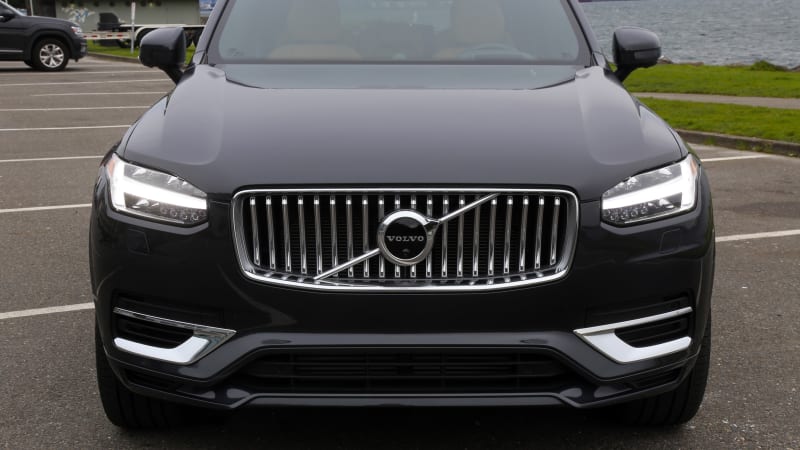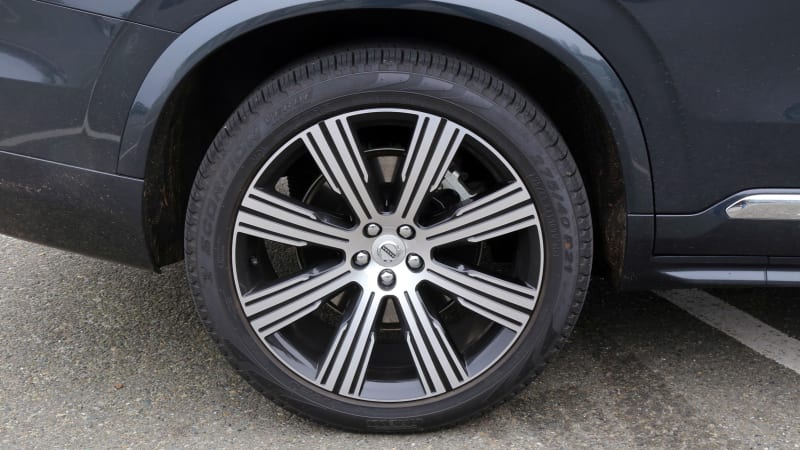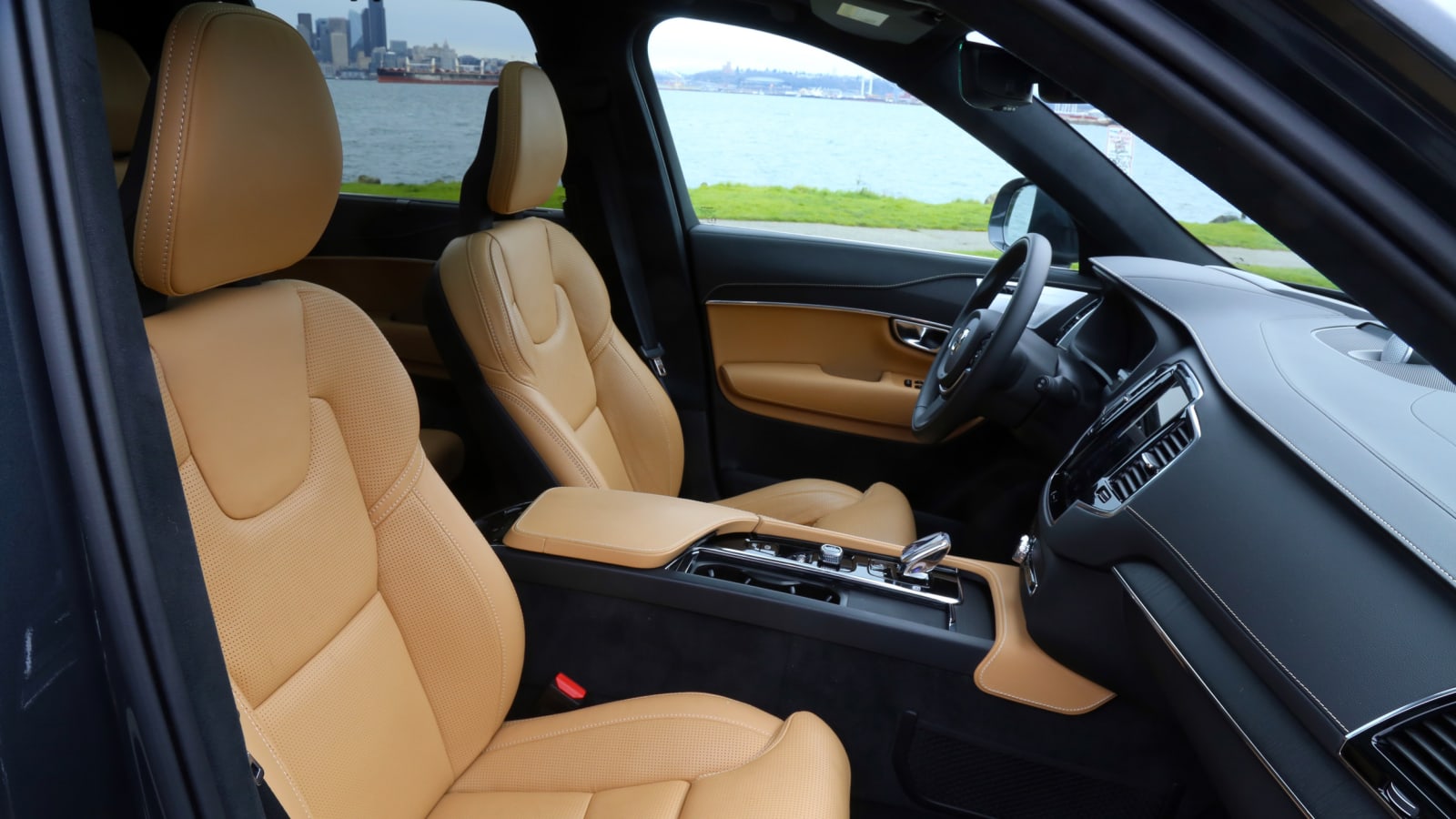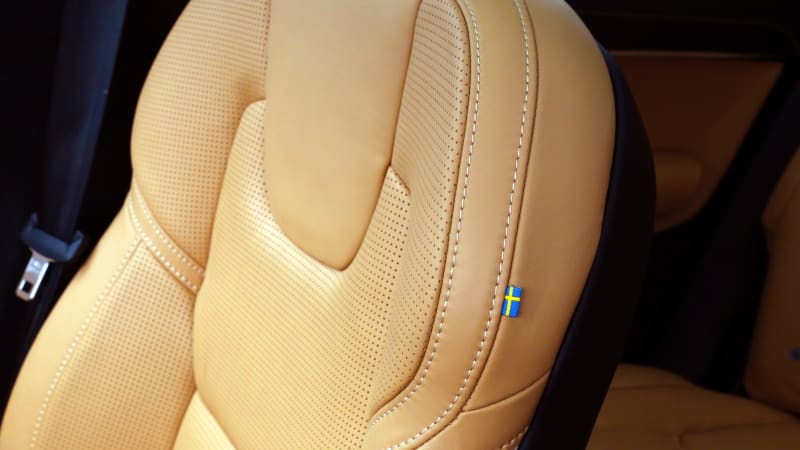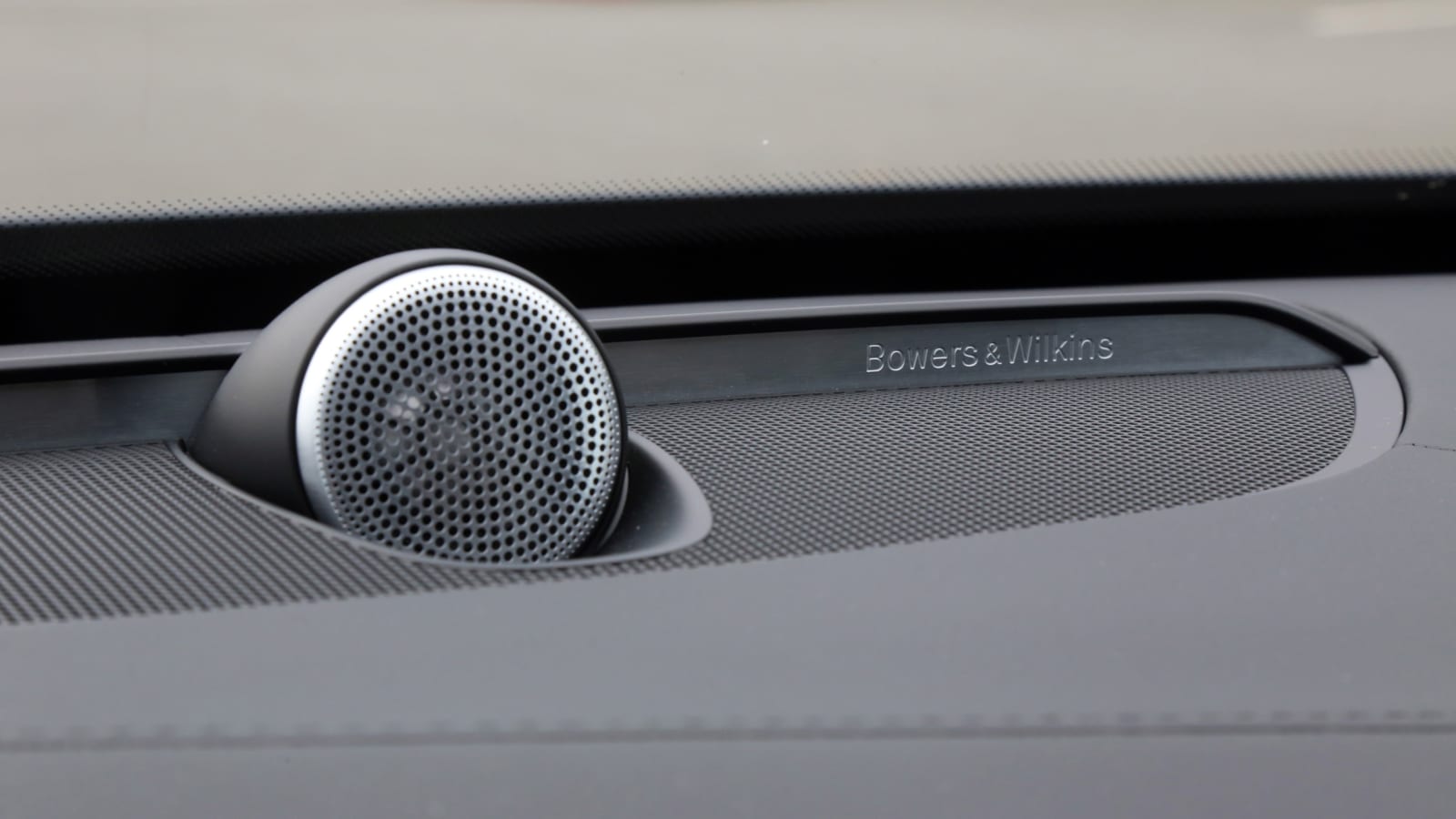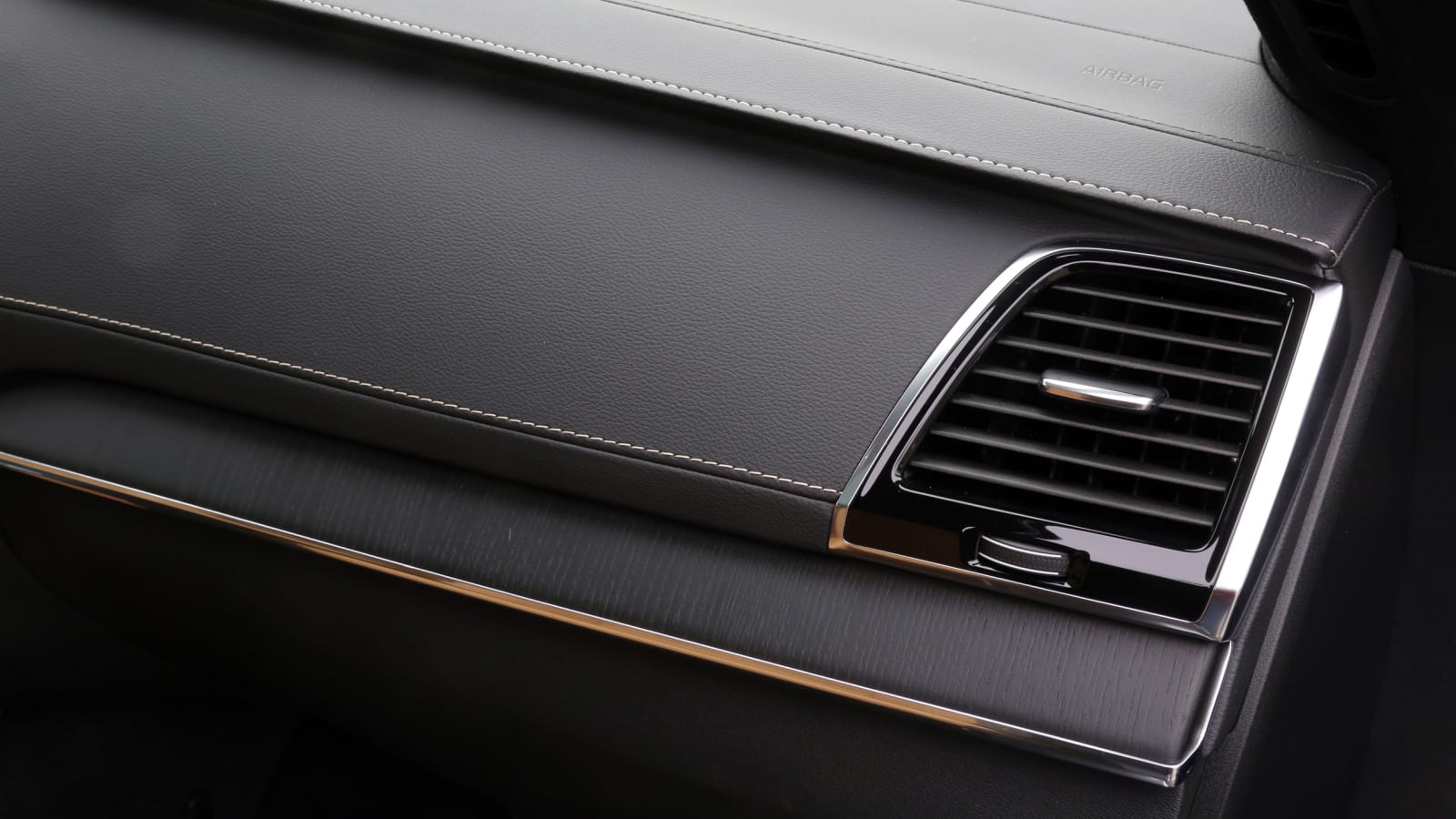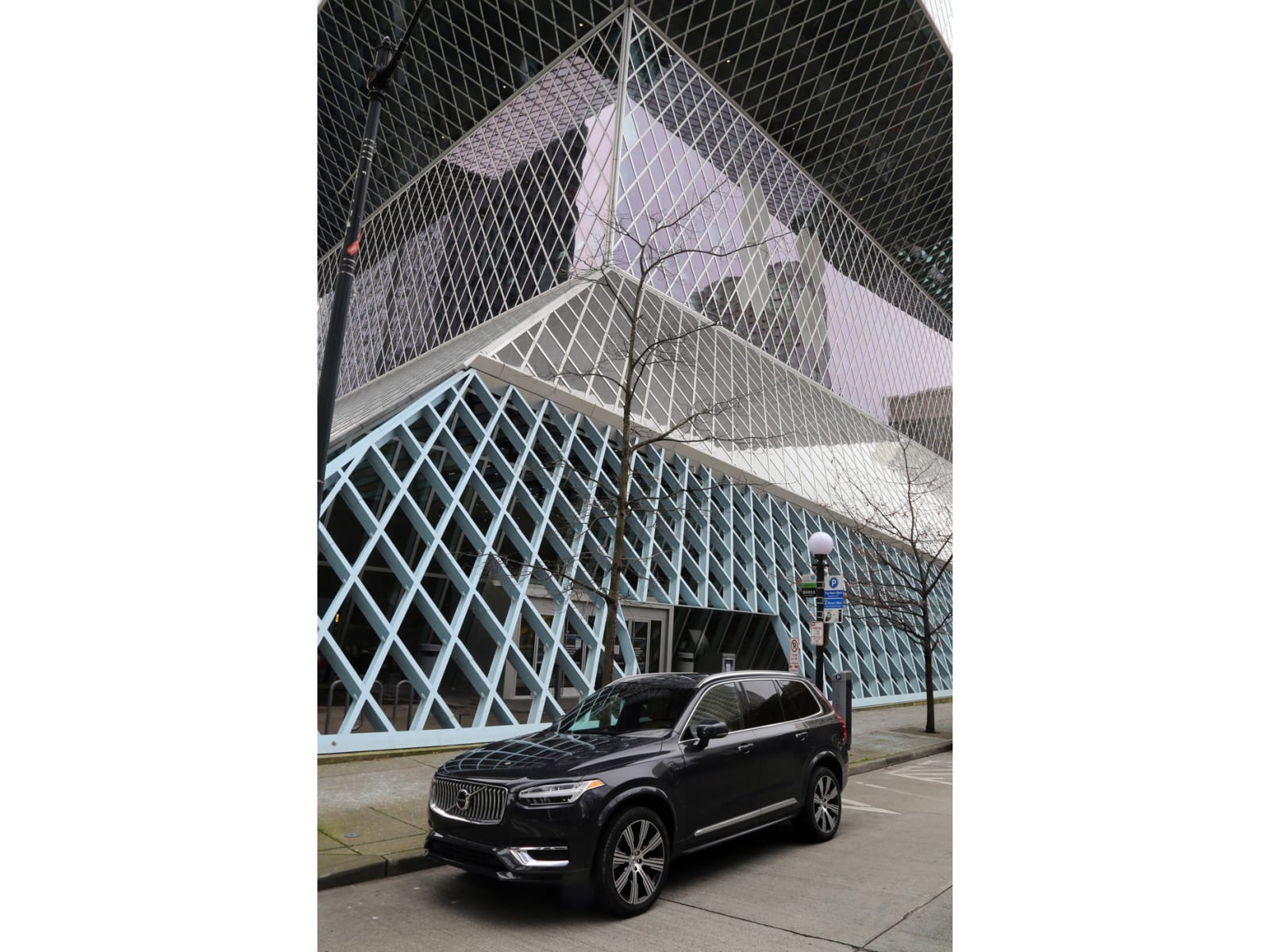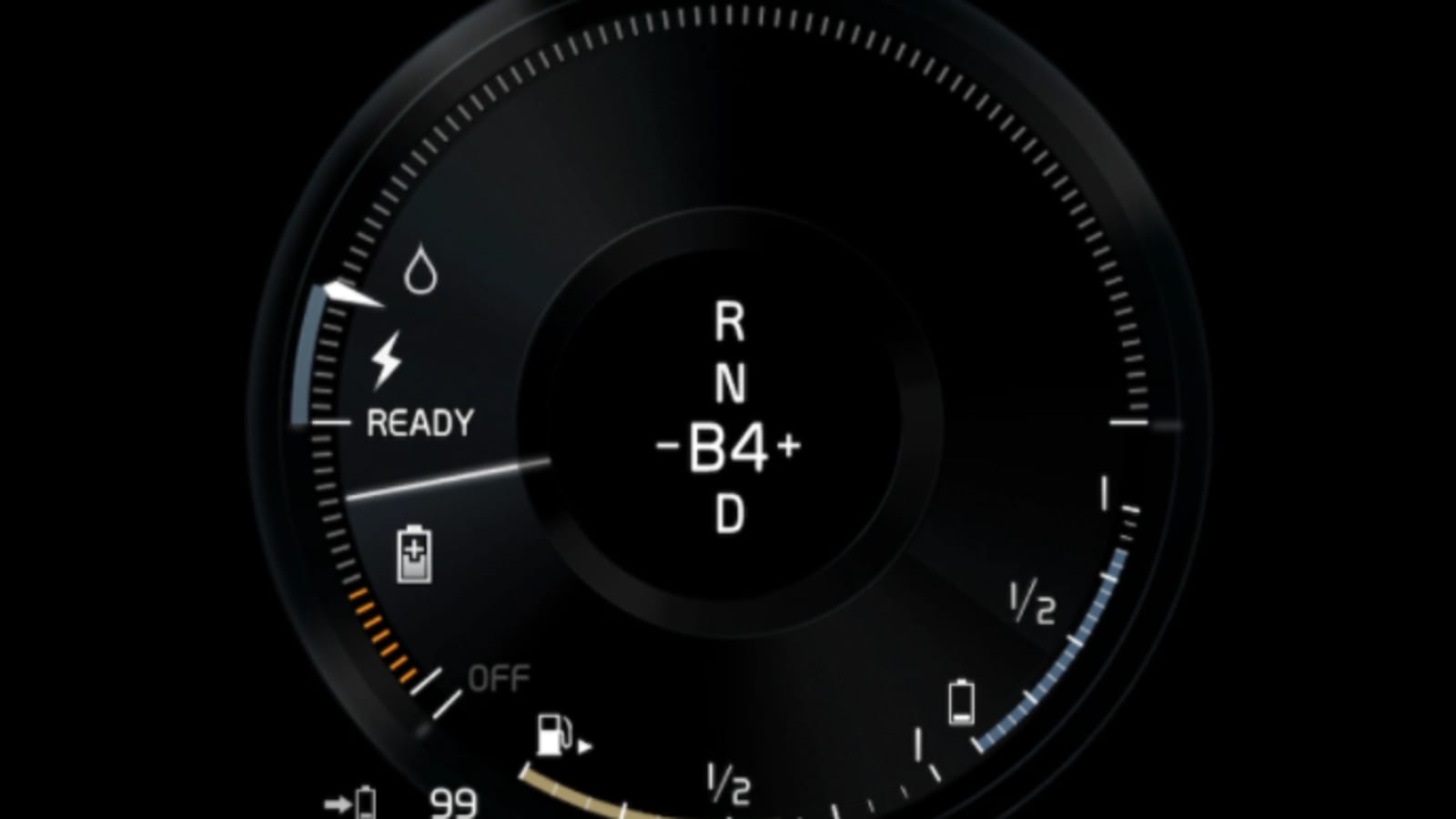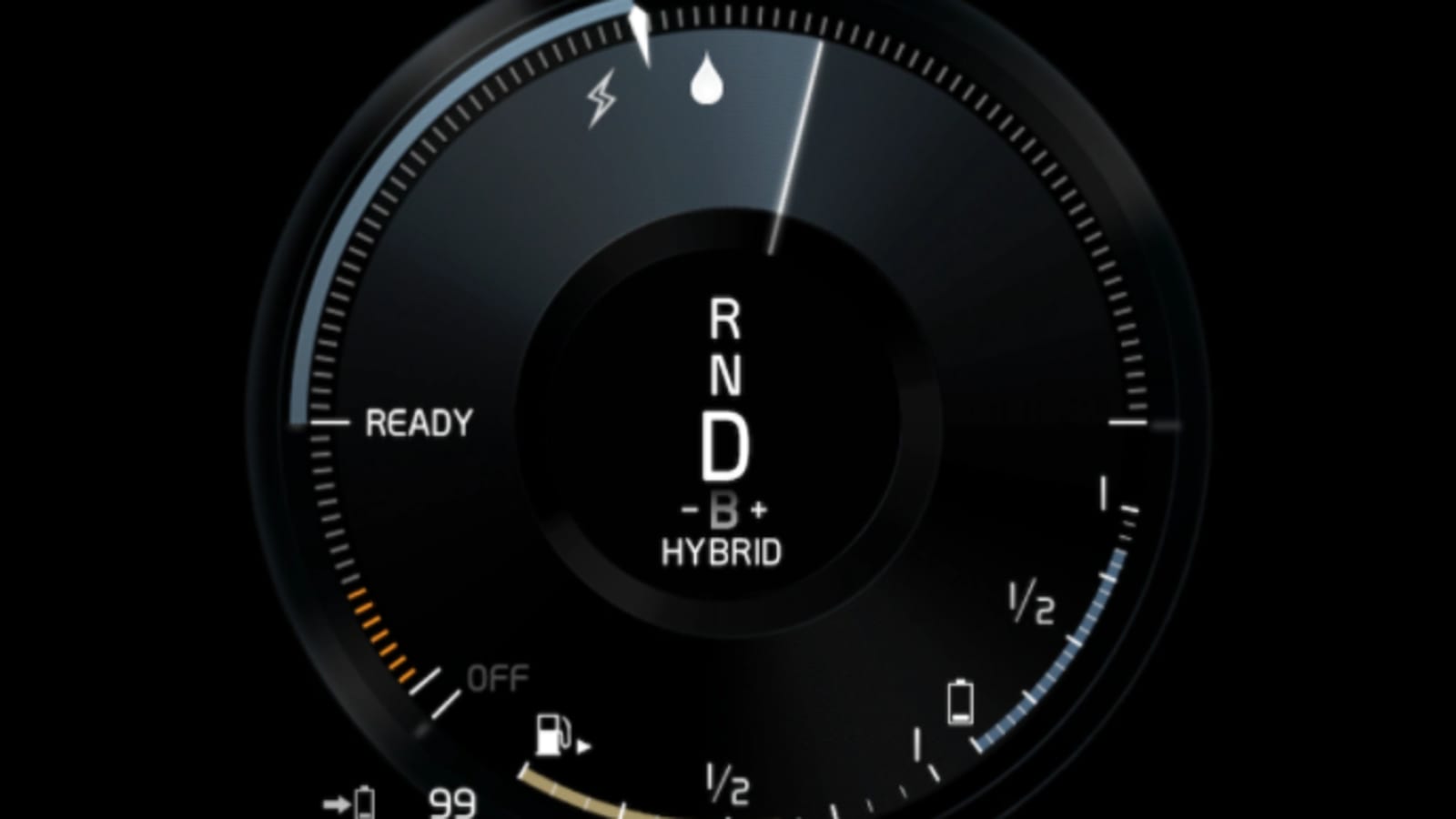Second thoughts … sometimes even buyer’s remorse. Nagging doubts can follow life’s big decisions — and buying a car is a biggie. Was it the right choice? Or as the poet said: “You may find yourself behind the wheel of a large automobile / And you may ask yourself, ‘Well, how did I get here?'”
Two years ago, I bought a 2017 Volvo XC90 lease return with 11,000 miles on it. I hadn’t expected to find an XC90 within my budget, but this one was attractively priced because it, A) was a T5, meaning turbo-only; B) had the base Momentum interior; and C) was a third-row delete, which was a turnoff to other car shoppers. Otherwise, it was heavily optioned and seemed like it would serve my family well and keep them safe.
And it has. It has lots of room. It drives as well as any medium-large SUV can. The tough leatherette endures the abuse of dogs and kids and the dirt of outdoor activities. The legendary Volvo seats have comforted and supported us, even on a 750-mile day from California to Washington. We’ve routinely seen highway mileage go past 30 mpg. And the off-road mode was surefooted during last month’s nationwide snowfall.
The car’s great. And yet, while at the Volvo dealership for complimentary service, sipping the waiting-room coffee and wandering the showroom, you see the cars you could have bought, had you spent more money — a turbo-and-supercharged T6, or the twin-charged-plus-plug-in-hybrid Recharge (previously known by the powertrain’s name of T8). And with Volvo’s elegant Inscription interiors. Would they have provided a better ownership experience than our secondhand lower-rung model? One doesn’t often get a do-over to answer such questions. But a recent week in a 2021 Volvo XC90 Recharge provided a drive down the nicer road not taken.
The differences between a 2017 T5 Momentum and the 2021 Recharge Inscription are many, and also few. They’re basically the same car, same dimensions inside and out, same overall feel. Panoramic sunroof, same. Massive cargo hold, same — though because ours lacks the third row, it gains a large secret underfloor storage compartment. Both XC90s have roof rails, but the rails on the new car are flush-mounted versus the ’17’s raised rails (you’d need different crossbar towers for each). Both are woefully lacking in cabin storage cubbies; a small dish in the old car’s console has been replaced by an inductive phone charging pad in the new car, which is a nice feature but means even less room for the detritus of daily life.
The knurled ignition switch is the same, though it functions differently now: In the old car, twist clockwise to start, counterclockwise to turn off; in the new car, clockwise and clockwise again, which can be confusing if you don’t watch the car’s status on the instrument panel. Knurled mode selector, same, just a different menu befitting the different powertrains. The shifter is still a knob, but it’s mechanical in the old car, electronic in the new car, with Park now relegated to a button. The Recharge Inscription shifter knob is a work of art, made of Orrefors crystal and crafted in the village of Kosta, Sweden.
The other big wow factor when you step into the Recharge Inscription’s cabin is the Amber perforated Nappa leather seating. These seats can be adjusted in every direction, including lumbar and side bolster settings, and a nifty powered thigh extension. They also have the $1,700 massaging option, though speaking only for myself, massaging seats in any car give the impression that something alive is crawling around in there. The Nappa leather itself is also buttery soft, though I’m told it can be prone to picking up dye from blue jeans — that’s not a concern with the leatherette.
On the dash, the inlays look like the real wood they are, while on the ’17 T5 they don’t and probably aren’t. My old T5’s dashboard and door panels are perfectly acceptable soft-touch plastic, but the Recharge Inscription gets upgraded to something stitched and leather-like, and the headliner is black Nubuck. Black is the way to go; the gray headliner on the old car is showing smudges.
There’s no real difference between the cars’ digital instrument panel or the 9-inch vertical touchscreen. But the Sensus infotainment system is now called Sensus Pro, and it’s more responsive. Both cars have the optional 360-degree surround-view and backup camera system, but the image quality has been improved since 2017. One small annoyance on the old car: The heads-up display tends to drift out of view every couple of weeks and has to be recalibrated back into position; in a week with the new car, the HUD stayed put. The 330-watt, 10-speaker standard audio system in the T5 sounds just fine, but the T8’s optional 1,400-watt, 19-speaker Bowers & Wilkins system is a step up — visually as well as aurally, with its showy “tweeter-on-top” on the dash.
Rear-seat passengers in the Recharge Inscription benefit from heated seats and four, yes four, zones of climate control. In the old T5 Momentum, they have to complain to the driver or roll down their window.
My biggest concern when buying the T5 was the idea that a 2.0 four-cylinder, even with the aid of a turbocharger, was up to the task of propelling an almost-4,400-pound SUV. But before the auto industry’s power arms race of recent years, 250 horsepower and 258 pound-feet of torque would have seemed acceptable to most people. And it is. The XC90 T5 is as quick as a family SUV needs to be. Meanwhile, there was an expectation that adding a supercharger and hybrid powertrain, boosting combined output to 400 horsepower and 472 pound-feet of torque, would make the T8 powertrain as wildly different as those numbers suggest. Surprisingly, it doesn’t. You see a difference when you flog it, but in normal driving and normal traffic, it just doesn’t feel much quicker. Why that is, and what does feel different: The Recharge feels heavy, thanks to all that extra hardware and battery — at 5,170 pounds, it is nearly 800 pounds chunkier than the old T5. An air suspension system compensates in the handling, but there’s simply more inertia to overcome when going and stopping. The T5 feels light on its feet, relatively, if you can say that about an SUV, while the T8 feels even more substantial. You are in a well-crafted, well-appointed Swedish tank.
But even though the Recharge is heavier, the EPA says it burns less than half as much petroleum in a year as the T5. Impressive.
Clearly, it achieves this by mechanical and electronic prestidigitation. Just sit in the car awhile after you’ve switched it off. You’ll hear a fascinating series of clicking and clunking sounds from deep within the machine for several minutes as its various systems do whatever they do when they’re not moving the Recharge down the road. The XC90 has been dinged in reliability surveys over the years, and it seems fair to assume its most complex powertrain has the most potential for problems.
The engine note is definitely improved by adding the supercharger and the hybrid system. The base turbo 2.0-liter, when accelerating, sounds like … well, like it’s gargling. Strange at first, but I’ve grown to think of it as a happy sound. In the Recharge, it’s quieter, either due to its extra charging, so to speak, or better insulation. The transitions between electric power and the engine are almost imperceptible. You usually have to consult the eco gauge to know for sure.
That gauge: In place of a tachometer, the Recharge gains a hybrid eco dial. It takes a couple of drives to appreciate everything it’s conveying.
The first image above, for example, shows the car on electric power only (lightning bolt symbol), with the battery receiving regenerative energy, as indicated by the thin main power pointer dipping below the “Ready” mark. (If the needle’s at “Ready,” you’re stationary and drawing no power.) The car is also shown in “B mode” manual shifting. In the second image, the car is accelerating under engine power (indicated by the droplet of fuel). In both images, the diamond-shaped pointer indicates the ever-changing transition point between electric and engine power. Electric-only driving can come on even at highway speeds. And of course, the gauge also shows fuel and battery reserves.
At first, I was quickly gobbling the battery’s 18-mile electric-only range, and getting the same 23-24 mpg around town that I get with the T5. But the more time you spend with the gauge, the more you grok it and respond to it, and my real-time fuel economy shot up. Actively toggling into B-mode engine braking greatly boosts the regen. It’s a fun, involving way to drive, and toward the end of the week, the T8 was approaching its 55 MPGe combined rating.
This 2021 Volvo XC90 Recharge Inscription’s MSRP was $81,690, including a $995 destination fee. That’s a lot, and a big jump from the $57,000 my T5 Momentum would list for new, as-equipped. But. It’s a big, safe, handsome vehicle that, seven years into the XC90’s lifecycle, is still impressive. The Volvo XC90 Recharge T8 is a nice thing.
But we can’t all have nice things. Do I regret settling for its cheaper brother? Only a little. In the alternate universe where I bought a T8 instead, I’m probably wondering what a T5 would be like, as I regretfully wipe muddy paw prints off of those pretty perforated seats.
Related video:


